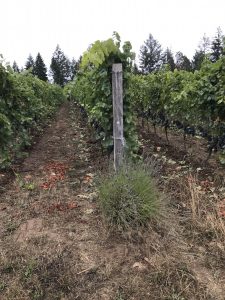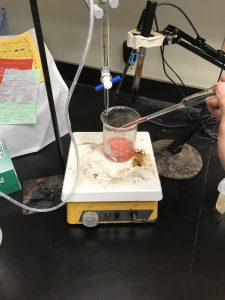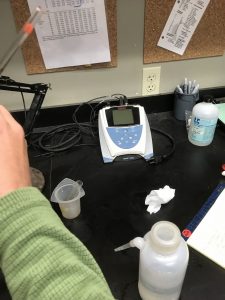In my last post I said what my lab work involved. To get those measurements to be accurate to the block in the vineyard, the fruit should be picked evenly. To do this imagine a 16 row vineyard, you would pick 4 clusters on a row and then skip 4 rows so that you would have 16 clusters that were from all over the block. While taking the samples for the lab, it is also good to do yield estimates. To do this when I would pick a cluster I would count every cluster on the next 5 plants. So in the end I would get 16 numbers. These numbers and total weight of the clusters were used to figure out much fruit that block would have.
Sadly, I do not have any pictures of bottling. I had a very simple job during bottling though, I put bottles onto a conveyor belt. They went into to get filled with wine, corked, foiled, labelled and then put into boxes.





